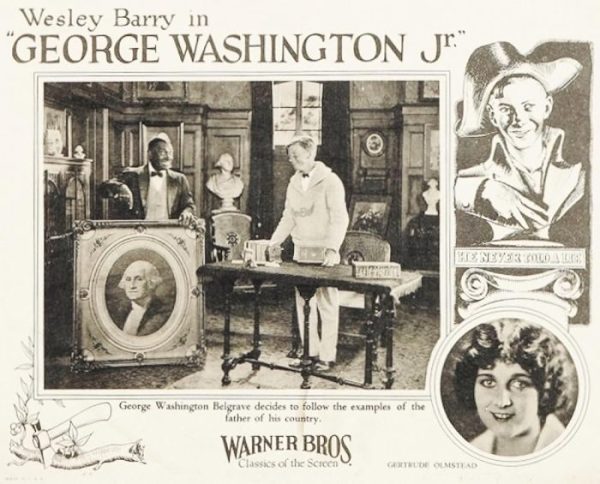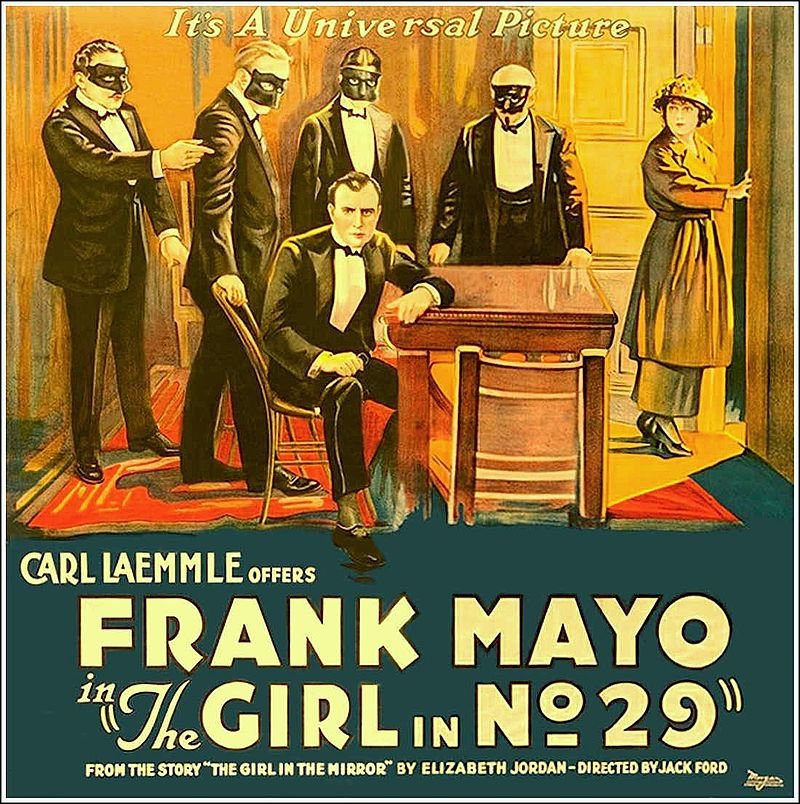silent film
Flick Friday: [The] Forbidden Lover 1923

One hundred years, ago, today, the black & white silent film [The] Forbidden Lover was released. Brackets around “THE” is a product of the differences of the title from data sources. This film is an edited version of The Power of Love, the very first 3-D movie, released on September 27, 1922 at the Ambassador Hotel Theater in Los Angeles. Both films are believed lost.
Directed by Nat G. Deverich and, written by Kate Corbaley & Caroline Crawford, it starred Elliot Sparling, Barbara Bedford, Noah Beery, Aileen Manning, Albert Prisco and John Herdman.
Yankee sea captain lands on the coast during the old Spanish days to trade with the ranch owners. He meets a girl who is betrothed to a man she loathes. After a series of adventures and narrow escapes, he shows up the unscrupulous ranch owner and wins the girl.
IMDb [The] Forbidden Lover Storyline
Motion Picture News Booking Guide
October 1923
Production Company: Sierra Productions
Tagline: A Romance Of Early California
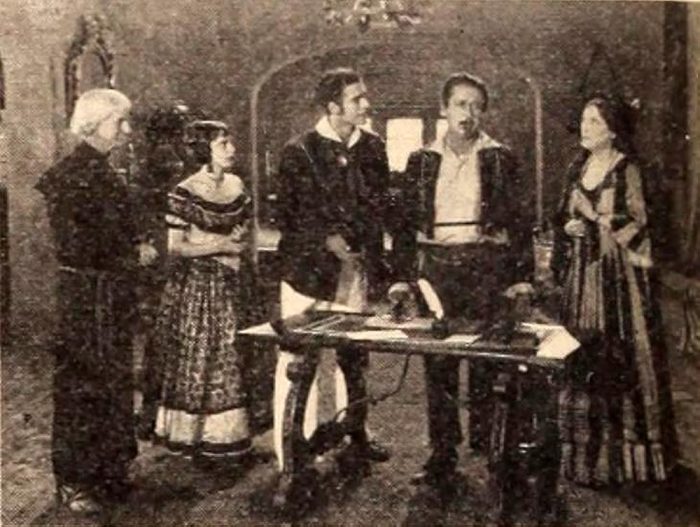
The Power Of Love
Image Credit: IMDb & Amazon
Because of his financial trouble, Don Almeda promises his daughter, Maria, to Don Alvarez but, Maria does not love [him]. In fact, she falls in love with Terry O’Neil, a stranger who has been wounded by robbers associated with Alvarez. O’Neil takes Alvarez’s place at a masked ball. Alvarez, in turn, robs the old Padre of some pearls and stabs him to death with O’Neil’s knife. He then accuses O’Neil of the murder and tries to shoot him but, wounds Maria instead, having thrown herself in front of him. Maria recovers and, after proving that Alvarez is a thief and a killer, weds O’Neil.
IMDb The Power of Love Storyline
Moving Picture World
October 1922
Production Company: Perfect Pictures
Tagline: A pair of spectacles will be handed to you as you enter the theatre, through which you will view the new sterescopic pictures.
The Power of Love was screened in front of a live audience at the Ambassador Hotel Theater […]. It was projected dual-strip in the red/green anaglyph format, making it both the earliest known film that utilized dual strip projection and the earliest known film in which anaglyph glasses were used. The camera rig used to shoot the film was made by the producers themselves and as you can imagine, it was far from perfect. Simply put, the film was not a success. It was screened, again, for exhibitors, and press, in New York City and, then, almost immediately fell out of sight. It was not booked again by other exhibitors. Unfortunately, we may never see what this movie looked like.
3-D TV & Movies
The first stereoscopic image dates to 1844, which makes 3-D images as old as the art of photography. [No] less a personage than Queen Victoria was photographed in 1854 in stereoscopic 3-D. 3-D stereoscopic moving images date to the 1850s with what was called the Kinetamatoscope [sic]. The first public display of a 3-D movie came in 1922 with The Power of Love […]. The film received a decent review in Moving Pictures World, then promptly disappeared from history by changing its title to Forbidden Lover and touring the country in a 2-D version. It was too complex and costly at the time to take 3-D on the road.
Randome
Looking Up/My Daily Plant Blogspot (Blogger)
Cirque de 3-D
March 6, 2009
What Was The First 3D Movie? (3D TV & Movies/Web Archive/06-02-2011)
A Tour Through The History Of 3-D Movies (Reelz/Jeff Otto/01-22-2009/Web Archive/07-20-2012)
Forbidden Lover (Silent Era/06-08-2013)
The Power of Love (Silent Era/10-16-2011)
Forbidden Lover (TCM)
The Forbidden Lover (AFI Catalog)
The Power of Love (AFI Catalog)
The Shot Of The Year (The Dissolve/Calum Marsh/12-19-2014)
Flick Friday: To Hell With The Kaiser! 1918
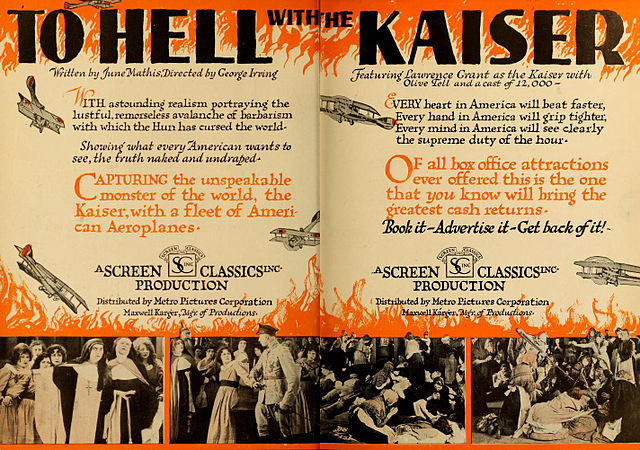
Source: Archive Image
Author: Metro Pictures/Screen Classics, Inc.
One-hundred, five years, ago, today…the silent black & white, comedy-drama To Hell With The Kaiser! was released. Written by June Mathis and directed by George Irving, it starred Lawrence Grant (as The Kaiser/actor Robert Graubel), Olive Tell, Betty Howe, John Sunderland, Earl Schenck (as the Crown Prince), Mabel Wright, Frank Currier, Karl Dane and Walter P. Lewis as Satan.
Following the death of his father, Frederick III of Germany, Wilhelm Hohenzollern becomes the German Kaiser and forms a pact with the devil that, he will conquer the globe in exchange for his soul. During the Kaiser’s invasion of Belgium, the Crown Prince enters a church and rapes Ruth Monroe, the daughter of an American inventor who has perfected a noiseless communications device. When the professor denounces the Crown Prince, he immediately is shot, whereupon his other daughter Alice vows to obtain revenge. While Alice’s sweetheart, Winslow Dodge, fights with the Americans as an aviator, she arranges to meet the Crown Prince through her friend Robert Graubel, an actor who impersonates the Kaiser at public functions. With her father’s wireless [device], Alice informs Winslow of the Kaiser’s whereabouts and, as he captures the German emperor, she kills the Crown Prince. Now a prisoner, the Kaiser drowns himself and wakes up in Hell, where Satan abdicates in his favor, saying that the Kaiser’s tortures are more fiendish than any he ever devised.
IMDb Storyline

Lobby Poster
IMDb & Amazon
Lawrence Grant, who spent his lengthy career playing odious villains, appeared in the dual role of Kaiser Wilhelm II and his look-alike, German actor Robert Graubel. Terrified of being assassinated, the Kaiser hires Graubel to impersonate him at various political functions. In the film, the Kaiser achieves military success through an infernal pact with Satan. Once this is established, the film concentrates on the seemingly endless tally of misdeeds perpetrated by the Kaiser during his quarter-century reign over Germany. His “partner in crime” is the Crown Prince […], who thinks nothing of casually raping convent girls and gunning down protesting nuns. The Crown Prince’s latest conquest is Ruth Monroe […], the daughter of an American inventor. When Ruth’s father protests this outrage, he is brutally murdered, whereupon Ruth’s sister Alice […] vows revenge. Using her father’s newest invention, a wireless machine whose coded messages cannot be intercepted, Alice directs a battalion of planes to bomb the small German village where the Kaiser is hiding. Captured by the Allies, the Kaiser is ignominiously dumped in a POW camp but, not before enduring a well-aimed sock on the jaw from a pugnacious dough-boy. In despair, the Kaiser commits suicide and sends his soul to hell. In hell, the devil […] gives up his throne, confessing that the Kaiser is far more sinister than he could ever hope to be.
[On June 8, 1918], Motography ran a Screen Classics press release explaining that To Hell With The Kaiser “reveals the machinations of Europe’s military monster before and during the war, his contempt for Americans […], his elaborate plans to crush France, […] destroy Russia, […] partition the world, […] his [order] to employ deadly gases in the war, the true circumstances under which he ordered the sinking of the Lusitania, the raiding of hospitals […].” Years before the war, Mr. Grant’s physical likeness to the German ruler was noted by a high official of the Kaiser’s court and a proposition was made for Grant to play the Kaiser in a dramatization […]. The war broke out before discussions went any further.
Actor John Sunderland, playing American pilot Winslow Dodge, was himself “an aviator who has seen service in Belgium.”
[It] had been released in the press that Kaiser Wilhelm II had half a dozen doubles who were employed to pose for him in various parts of the country, where there might be danger of assassination, while the real Kaiser, himself, remained safe behind this cloak.
To Hell With The Kaiser opened in New York City at the Broadway Theatre on June 30, 1918, immediately after it had emerged from the cutting and editing rooms […].
The film turned out to be an effective propaganda tool […]. Not only has the picture been shown in munitions plants and training camps […] but, this power has now been demonstrated in a new way…to convert conscientious objectors.
The National Film Preservation Board (NFPB) included this film on its list of Lost U.S. Silent Feature Films as of February 2021.
I found the building of this post fascinating. What started out as a simple movie post, turned into a history lesson. It’s a shame that it is lost. There are photographs of still pictures on IMDb. ~Vic
Movie Monday: Suffrage And The Man 1912

One hundred, ten years ago, today, the B&W silent, short comedy film Suffrage and the Man was released. Produced by the French company Eclair, in conjunction with the Women’s Political Union, its original title was Suffrage Wins Herbert.
A young man learns that his betrothed is leaning toward the suffragette cause. He remonstrates with her father to be told “My butler and my bootblack may vote, why not my wife and daughter?” He cannot agree, however and their quarrel brings about a broken engagement. Disappointed and unhappy, he seeks forgetfulness by going to a summer resort. There, he succumbs to the wiles of a designing mother and, caught in an embarrassing position, her daughter “feinting a faint” in his arms, he permits their engagement to be announced. He learns, by an accidental eavesdropping, of the mother’s trickery. He loses no time to denounce the deception and withdraw his offer of marriage. The mother and daughter promptly start suit tor breach of promise. In the meantime, votes have been won for women. The trial of the suit comes up before a mixed jury of men and women with the old sweetheart as forewoman of the twelve peers. Their verdict is acquittal and, as might be expected, “Suffrage Wins Herbert” with a permanently happy result in his reconciliation and marriage.
IMDb Summary
Written by: Moving Picture World
According to Silent Era, the director is unknown, the cast is unknown and the film’s survival status is unknown. There is one trivia bit…it is based on a story written by playwright Dorothy Steele. ~Vic
Flick Friday: The Death Train 1915

A Silent Film Rule:
Pies Go Splat But Damsels Never Do
Oh, it has been work looking for a film for today’s date. IMDB had plenty to choose from but, I couldn’t seem to get any further information from the others…Wikipedia, American Film Institute, Turner Classic Movies… Even the Silent Era site and Silent Hollywood were slim pickings and, Silentology had nothing.
Anyway, one hundred, five years ago, today, Episode #17 of The Hazards of Helen, The Death Train, was released. Similar to The Perils of Pauline, The Hazards of Helen was a film serial or series that ran from November 7, 1914 to February 24, 1917.
There were 119 episodes that were 12 minutes long, most of which have been lost. Based upon a novel written by John Russell Corvell and a play written by Denman Thompson, W. Scott Darling adapted the material for the silent screen and Edward T. Matlack wrote The Death Train, specifically. Directors were J. P. McGowan (1-48) and J. Gunnis Davis for the rest. The original actress was Helen Holmes (1-48), followed by Helen Gibson for the remainder of the series, with Anna Nilsson filling in for Holmes for Episode #18.
This episode also starred Rex Downs, M. J. Murchison, Edmund ‘Hoot’ Gibson, Leo D. Maloney and George A. Williams. Helen Holmes did most of her own stunts.
The discovery that detectives are on their trail causes Doyle, Broden and Etzer, counterfeiters, to pack their paraphernalia into a trunk and express it to Lone Point. Upon its arrival at that station, a corner of the trunk is smashed. Helen thus learns of its contents. The telegrapher immediately wires to Savage, a railroad detective. The latter, accompanied by Duncan, a Secret Service detective, hastens to the scene. At their suggestion, Helen arranges a trap for the counterfeiters. When the latter appear, they are set upon by the officers. Etzer is captured but, his pals get away. Doyle eludes pursuit but, Broden later falls into Savage’s hands. Helen, watching the pursuit, ventures on the high trestle which crosses the dry bed of the Loro River. Doyle, who is hiding, sees Helen. Overpowered by a desire for revenge, the man attacks the telegrapher and makes her a prisoner. A rope lies nearby. Binding Helen, Doyle suspends his victim from the trestle and fastens the end of the line around the rails. Duncan sees this from afar. Although he rushes forward, he knows that the Keene local, due any moment, will cut the rope as it crosses the trestle. Meanwhile, Helen, after a tremendous effort, frees her hands. There is one chance for life. The girl commences swinging her body. Each time, she [manages] a wider arc. The train is crossing the trestle when Helen swings toward a beam. The engine wheels sever the rope. Helen flies through the air and reaches the beam. Doyle is captured. Savage and Duncan raise Helen to the tracks and find her uninjured.
Moving Picture World
This is one of the lost pieces so, there isn’t a YouTube clip and I could only find one picture. ~Vic
Additional Reading
Lost Films (European Union/German site)
Silent Era
Silent Hollywood (More on Helen Holmes)
Movie Monday: Thunder 1929

Ninety years ago, today, the melodramatic silent film Thunder was released. Written by Ann Price and Byron Morgan, it was directed by William Nigh. Considered a lost film, it starred Lon Chaney, Sr. (The Man of a Thousand Faces), Phyllis Haver, James Murray, Tom Keene, Frances Morris (Adventures of Superman (TV Series)/Sarah Kent) and Wally Albright. Though a silent movie, it did have sound effects and a musical score. Only half of the reel survived and this was Chaney’s last silent. [During filming], Chaney caught a cold during the snow scenes which, then, developed into walking pneumonia. Production was shut down for a time but, was eventually completed. Chaney’s illness, combined with his throat cancer, led to his death two months after the release of his last film, and only talkie, 1930’s The Unholy Three.

Synopses:
Lon Chaney plays Grumpy Anderson, a railroad engineer with an obsession for running his train on time. His slavishness to promptness causes several tragedies which alienate him from his family. By the story’s end, the engineer restores their faith in him and validates his obsession by forcing his train through a flood to bring badly needed Red Cross supplies to the victims.
[Source]
“Grumpy” Anderson is an old railroad engineer that is obsessed with keeping his train on schedule, no matter the cost. His two sons are also railmen but, don’t share his single mindedness, which leads to one son’s death and a fight with the other on the first son’s funeral car. [This] leads to a crash and demotion of Grumpy to mechanic in the yards. His redemption comes during the Mississippi flood when he is, again, pressed into service to pilot a relief train along with his surviving son.
[Source]
Thunder (the book) from Creepy Classics
Movie Monday: Being Respectable 1924
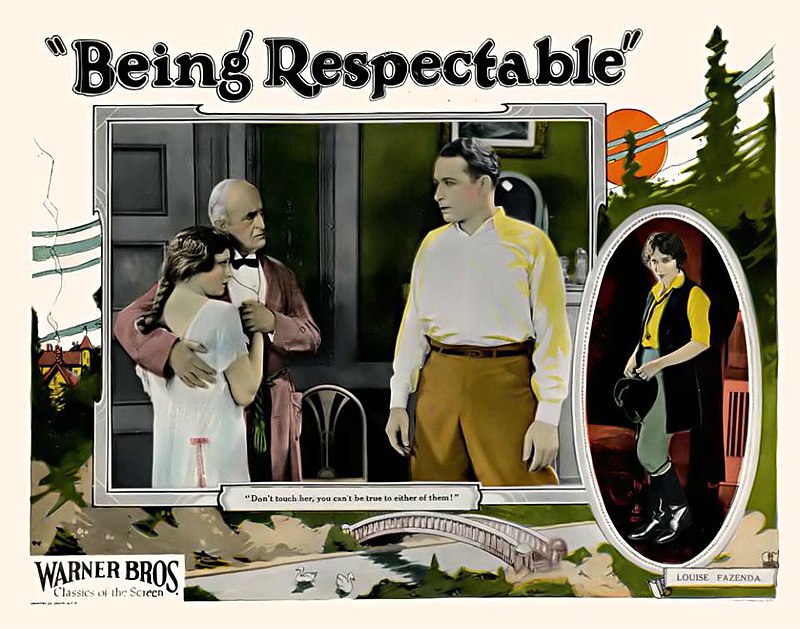
Image Credits: wikipedia.org & Warner Brothers
Ninety-five years ago, today, the silent drama Being Respectable was released. Based on the novel of the same name written by Grace Flandrau, it was adapted by Dorothy Farnum. Directed by Phil Rosen, it starred Marie Prevost, Monte Blue, Louise Fazenda, Irene Rich, Theodore von Eltz, Frank Currier, Eulalie Jensen, Lila Leslie, Sidney Bracey and Charles French.

Synopses:
Wealthy young Charles Carpenter is pressured by his family to marry Suzanne, even though he is really in love with young “flapper” Valerie. He gives in to his family’s pressure, however and marries Suzanne, after which Valerie leaves town. Years later, after Charles and Suzanne have had a child, Valerie comes back to town and, Charles realizes he is still in love with her…and she with him. Complications ensue. [Source]
Through the scheming of his respectable, and wealthy family, Charles Carpenter is obliged to marry Suzanne, although he is in love with young flapper Valerie Winship. Years later, when Valerie is back in town, they renew the affair and, Carpenter plans to leave his wife and child for her. […] in the end, he yields to family duty and respectability. [Source]
New York Times Review [August 4, 1924]
I could not find any video clips of this movie. ~Vic
Movie Monday: One-Thing-At-A-Time O’Day 1919
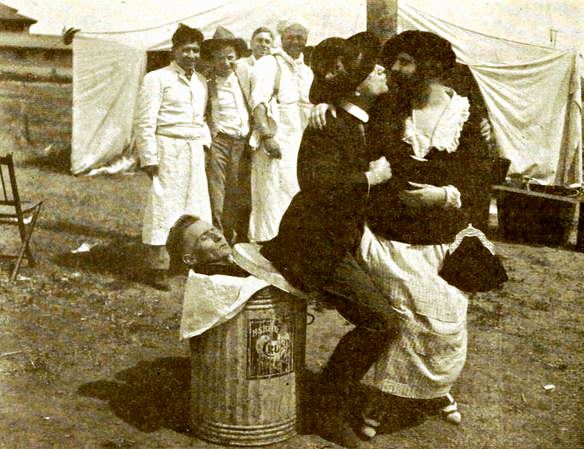
There weren’t any movies released on today’s date. So, I will use yesterday’s date. One-hundred years, ago, yesterday, One-Thing-At-A-Time O’Day was released. Based on a short story by William Pelley, it was directed by John Ince with the adaptation written by George Baker. A lost, silent comedy film, it starred Bert Lytell, Joseph Kilgour, Eileen Percy, Stanton Heck, William Carroll and Bull Montana.
Synopsis:
A serious-minded boob named Stradivarious O’Day, because his music-loving mother says he “fiddles his time away”, acquires his nickname because of his motto of “one thing at a time and that done well.” Falling in love when he first sees circus bareback rider Prairie-Flower Marie, O’Day, living off his inheritance, follows the circus until the pestered manager gives him a job cleaning his Ford. With the help of a manual, O’Day learns to drive and secures employment with the circus as a chauffeur. After strong man Gorilla Lawson, who also loves Marie, beats him up, O’Day contacts his friend, boxer Roughneck M’Dool, to teach him to fight. Lawson, frightened by O’Day’s daily development, steals the circus receipts, and the Ford, on the day of their scheduled fight but, O’Day overtakes and whips him. After O’Day weds Marie, he unwittingly goes against his motto when he becomes the father of twins.
[Source]
Movie Monday: The Brash Drummer & The Nectarine 1914

One-hundred, five years ago, today, The Brash Drummer and The Nectarine was released. A short, silent, black & white comedy, it was written and directed by George Ade, a popular American humorist for his time and a follower of Mark Twain. Starring Wallace Beery and Bevery Bayne, this piece was one of Ade’s Fables in Slang.
Summary:
Gabby Gus made the town regularly every month. He was a swell guy and thought he could cop most any Jane that he took a liking to. Clara Louise Willoughby, a farmer’s daughter with a pretty face and figure, took the salesman’s eye. He looked the old gent up in Dunn and Bradstreet and, discovered that the old boy was worth some coin. Then, he set his traps for the daughter. Dad, however, sent her away to boarding school and when she returned, she was the swellest peach in the orchard. They all fell for her. Gus hastened to her home where he discovered she was some lemon when it came to the country stuff and that she was a real ‘highfalutin’ society butterfly now. […] her aspirations were higher than a poor hick drummer. She made him feel awfully small. [Source]
I can’t find a video clip of this film but, I did find Ade’s Fables in Slang in audio book form. It has 26 stories and was published in 1899. [Disclaimer: It is nearly two hours long.] ~Vic
Movie Monday: The Lonely Villa 1909

One-hundred and ten years ago, today (exactly, believe it or not), the silent short crime-drama, The Lonely Villa, was released. A film directed by D. W. Griffith, it starred David Miles, Marion Leonard, Mary Pickford (in one of her very early roles), Gladys Egan and Adele DeGarde and, was based on the Andre de Lorde French play from 1901: Au Téléphone.
D. W. Griffith and Mary Pickford, along with Charlie Chaplin and Douglas Fairbanks, founded United Artists on February 5, 1919, as a studio where actors could control their own interests instead of being beholden to commercial studios. It is now a subsidiary of MGM and Annapurna Pictures and, as of February 5, 2019 (its 100th anniversary), it was rebranded as United Artists Releasing.
From IMDB:
A gang of thieves lure a man out of his home so that they can rob it and, threaten his wife and children. The family barricade themselves in an interior room but, the criminals are well-equipped for breaking in. When the father finds out what is happening, he must race against time to get back home.
Trivia Bit
♦ During the shot of the father leaving the hotel, a dip can be seen in the road in the background. Today, that is currently the exit for the George Washington Bridge and the location of the hotel is now an apartment complex.
